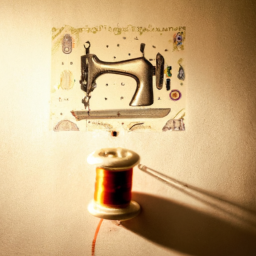
History of Sewing Machine Timeline
Invention of the Sewing Machine
The first attempts at mechanizing sewing were made during the late 18th century. English inventor Thomas Saint created the first known sewing machine design in 1790, but no working machine was ever built based on his drawings.
The First Practical Sewing Machine
During the early 19th century, several inventors, including Josef Madersperger, Barthelemy Thimonnier, and John Fisher, developed functioning sewing machines. However, these machines were primarily used for leather and canvas applications, rather than fabric sewing.
Issac Singer’s Sewing Machine Patent
American inventor and entrepreneur Isaac Singer patented the first practical sewing machine aimed at home use. The machine incorporated many important features that made sewing easier and more efficient.
First Sewing Machine Exhibition
The Great Exhibition in London featured sewing machines from various manufacturers. This event marked the beginning of the modern sewing machine industry as companies showcased their latest innovations and sparked widespread interest in sewing machines.
Invention of the Electric Sewing Machine
The introduction of the electric sewing machine revolutionized the industry. The machine powered by a small motor increased efficiency and reduced manual labor, making it accessible to a wider range of people.
Introduction of the Portable Sewing Machine
The portable sewing machine gained popularity, offering greater convenience and versatility. It allowed sewers to take their machines to different locations, paving the way for increased creativity and flexibility in sewing.
Advancements in Computerized Sewing Machines
With the advent of computer technology, sewing machines became more advanced and automated. Computerized sewing machines emerged, offering a wide range of features, such as programmable stitching patterns and automated embroidery functions.
Conclusion
Throughout history, the sewing machine has evolved from a simple idea to a vital tool in the textile industry and households worldwide. From its humble beginnings in the late 18th century to the computerized machines of today, the sewing machine continues to play a crucial role in making garment production faster, more efficient, and accessible to all.




